Awk
This can be achieved with an awk script which utilizes ANSI escape sequences
#!/usr/bin/awk -f
# USAGE: echo -e "AA\nAABBAABBCC\nBBAABB" | awk -f color_grep.awk -v regex="AABB"
BEGIN {
# Bold Red ANSI Code
c[0] = "\x1b[1;31m"
# Bold Blue ANSI Code
c[1] = "\x1b[1;34m"
# Default ANSI Code
n = "\x1b[0m"
}
{
i--
j = 1
do {
temp = $0;
i = (i + 1) % 2
$0 = gensub("(" regex ")", c[i] "\\1" n, j, temp);
j++
} while ($0 != temp)
print $0
}
Or as a one liner on the command line:
echo -e "AA\nAABBAABBCC\nBBAABB" | awk 'BEGIN { c[0]="\x1b[1;31m"; c[1]="\x1b[1;34m"; n="\x1b[0m"} { i--; j=1; do { $0=gensub(/(AABB)/, c[i=(i+1)%2] "\\1" n, j++, temp=$0); } while ($0!=temp) print $0 }'
Perl
After seeing Adrian's answer, I decided to come up with my own perl solution.
#!/usr/bin/perl
# USAGE: echo -e "AA\nAABBAABBCC\nBBAABB" | ~/color_grep.perl "AABB"
$regex = @ARGV[0];
# Generates ANSI escape sequences for bold text colored as follows:
# 0 - Red, 2 - Green, 3- Yellow, 4 - Blue, 5 - Magenta, 6 - Cyan
sub color { "\033\[1;" . (31 + $_[0] % 6) . "m" }
# ANSI escape sequence for default text
$default = "\033\[0m";
while (<STDIN>) {
# Surround the matched expression with the color start and color end tags.
# After outputting each match, increment to the next color index
s/($regex)/color($i++) . $1 . $default/ge;
print;
}
As a one liner:
printf "FOOBARFOOFOOFOOBAR\nFOOBARFOOFOOFOOBARFOOFOOFOOFOOFOOFOOFOOFOOFOOFOOFOOFOO\n" | perl -ne 'BEGIN{sub c {"\033\[1;".(31+$_[0]%6)."m"} $d="\033\[0m";} s/(FOO)/c($i++).$1.$d/ge; print'




